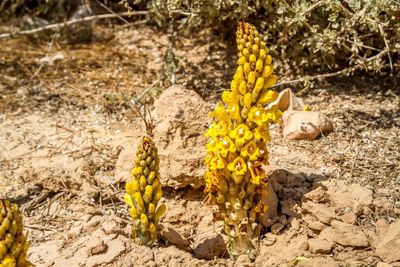Desert Hyacinth Growing Info
Desert hyacinth thrives in climates that receive as little as 8 inches (20 cm.) of water per year, usually during the winter months. Soil is usually sandy and salty in nature. Since desert hyacinth is unable to synthesize chlorophyll, the plant displays no green parts, and the flower extends from a single, whitish stalk. The plant survives by sucking water and nutrients from saltbush and other desert plants via a thin root extending from an underground tuber. The root can stretch to other plants several feet (or meters) away. Desert hyacinth is found in many of the world’s deserts, including the Negev Desert in Israel, the Taklamakan Desert in northwest China, the Arabian Gulf Coast, and the arid regions of Pakistan, Rajasthan, and Punjab. Traditionally, the plant has been used to treat a range of conditions, including contusions, low fertility, decreased sex drive, constipation, high blood pressure, memory problems, and fatigue. It is often dried to a powder and mixed with camel’s milk. Desert hyacinth is a rare and endangered species, but unless you can provide the ideal growing conditions, cultivation of desert hyacinth in a home garden is extremely difficult.
